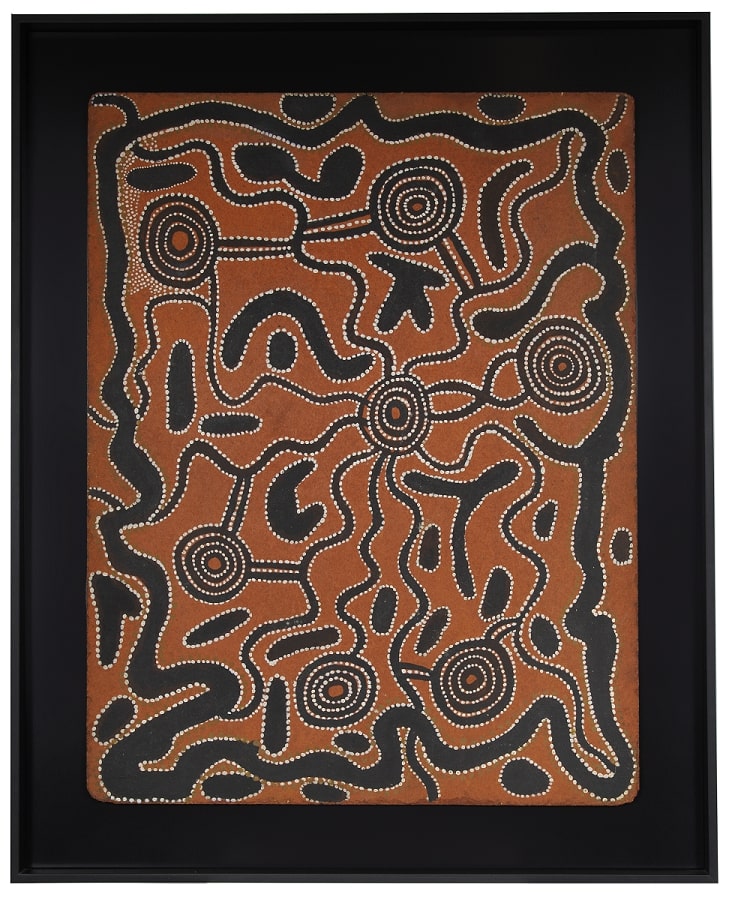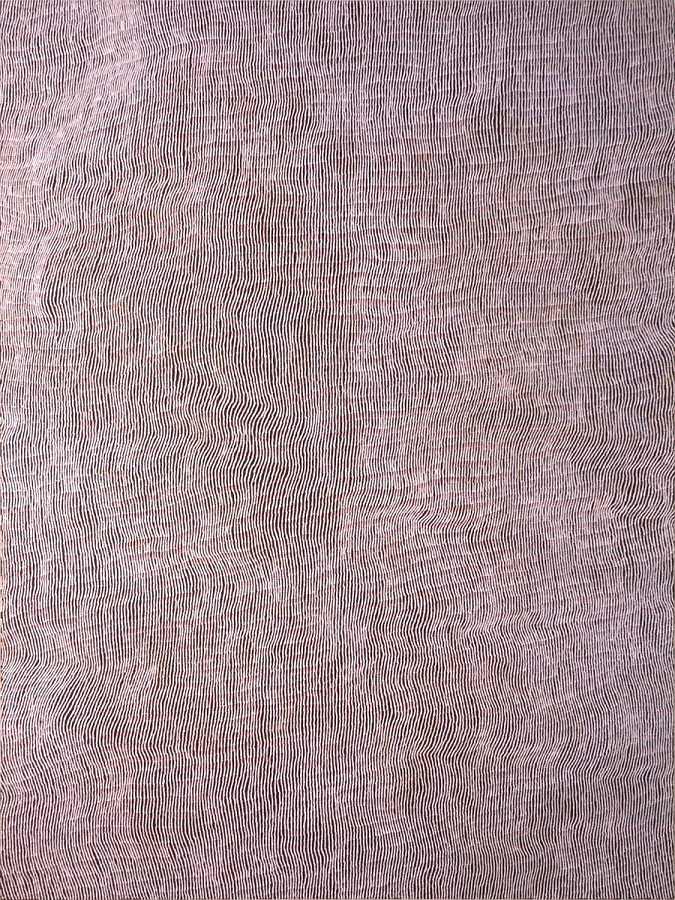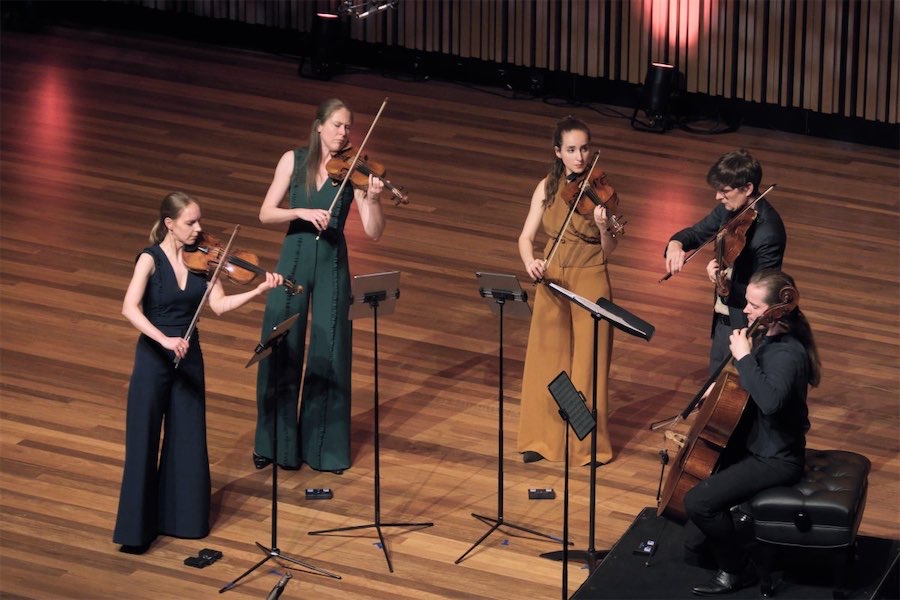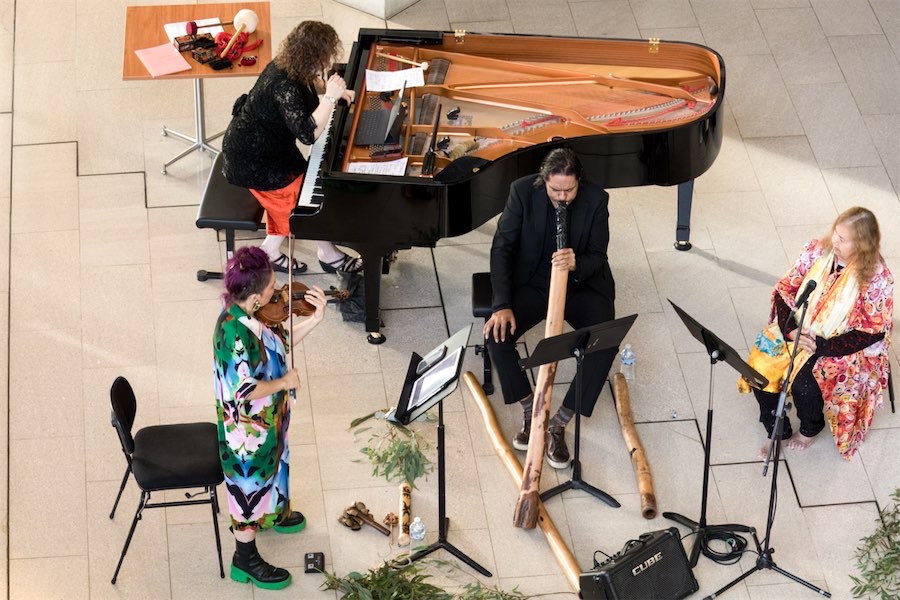
Art / “Pintupi Way”. At The ANU Drill Hall Gallery until December 17. Reviewed by BARRINA SOUTH.
AS you enter the Drill Hall Gallery, at the Australian National University, the works on show in the new exhibition, “Pintupi Way”, sing to you, and you can’t help but stand back and listen.
The artworks through the underlining expression of Tjukurrpa combined with the deliberate brushstrokes and compositions, create art works that shimmer and vibrate demanding the viewer to spend time with each painting. When the viewer accepts this invitation, they are not disappointed as each art works flashes, revealing multiple layers of meaning.
The artworks consist of large-scale contemporary works, seminal boards and smaller works representing the diversity of the painting produced by the Pintupi from the Western Desert. The designs in each of the works have been used by the Pintupi for millennium, the dots, circles and lines, the only difference today is the style not the message.

The artworks on display have come from private collections and institutions, carefully curated by Christopher Hodges, gallery owner and long-time supporter of art from the Western Desert. The appreciation for works created from the Western Desert wasn’t always there. In its infancy the art from the area was overlooked as artists experimented with different colours such as vivid blues, pink and techniques.
In my earlier career working in the Australian Museum, I was fortunate to work closely with some of the early artworks on Masonite board, collected in the art movement infancy, a time when some of the art centres were struggling to survive. Many of the artists in the Pintupi Way exhibition are descendants of the artists from these early days.
For me the work by Yukultji Napangati, “Untitled” is stunning, I could admire this work for hours and the work by Charlie Tawara (Tjaruru) Tjungurrayi, “Water Snake Dreaming”, an early work on board reminds me of the early works of the art movement.
From the speeches on the opening night, it is the purpose and meaning of the artworks, Country and the artists themselves, is the reason why people are drawn to the art from the Western Desert.
For me this is where the exhibition falls short. I believe it would have benefited from having portraits of the artist present, photographs of Country and additional information to provide context and assist those who may not be familiar with art from Western Desert area and the art movement. To me, it was the missing piece.
As noted in the exhibition catalogue, the artworks offer an insight into “being in” Country, rather than simply looking at it.
Who can be trusted?
In a world of spin and confusion, there’s never been a more important time to support independent journalism in Canberra.
If you trust our work online and want to enforce the power of independent voices, I invite you to make a small contribution.
Every dollar of support is invested back into our journalism to help keep citynews.com.au strong and free.
Thank you,
Ian Meikle, editor




Leave a Reply